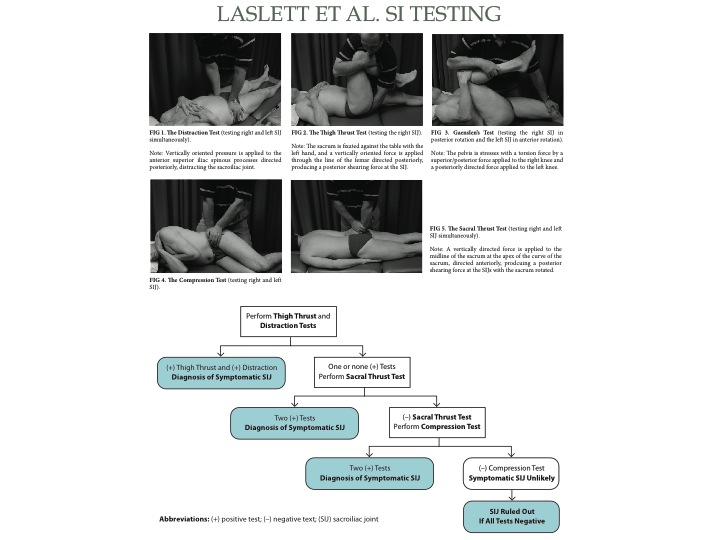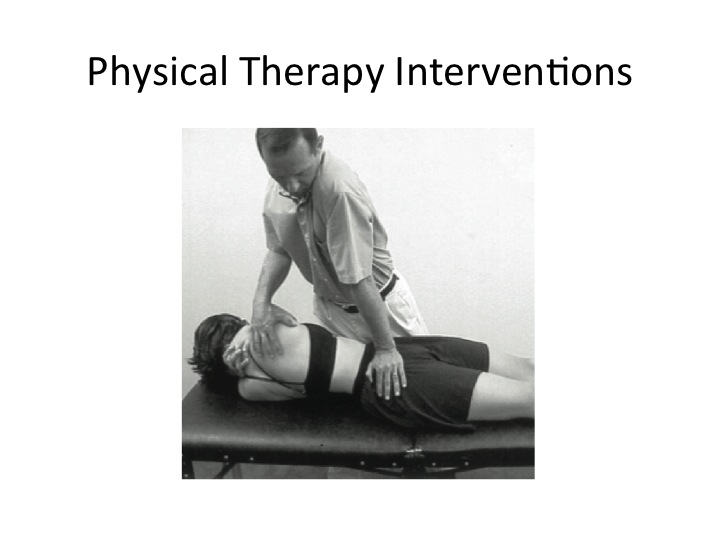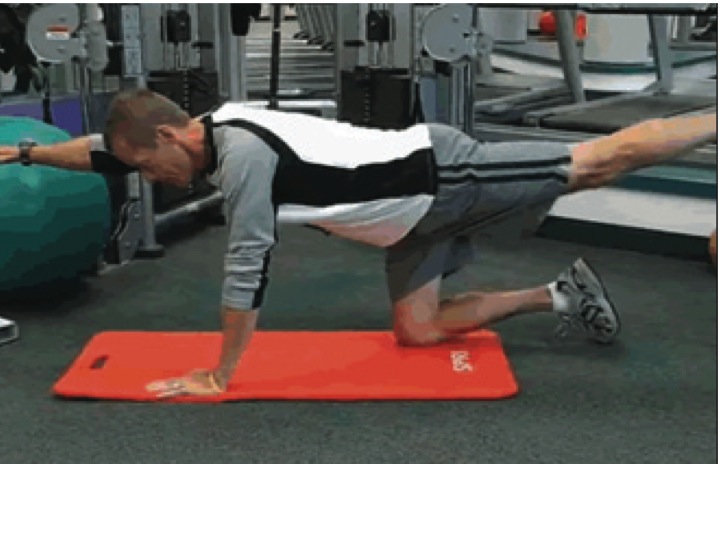Background
Sacroiliac (SI) joint pain is an less common source of low back pain but has a higher incidence pregnant and post partum patients, as well as, after trauma.
The incidence of SI pain in patients with low back pain is 13% (9-26%) (1). The majority of patients will report buttock pain (94%), lower lumbar pain (72%), lower extremity pain (50%), and groin pain (14%)(3).
In the past, the SI joint has been a difficult area to diagnose secondary to the lack of a gold standard diagnostic test and the diagnostic limitations of clinical testing involving static palpation and movement based tests.
These tests have been found positive in asymptomatic patients reducing their specificity for diagnosis (2).
A repeated motions examination of lumbar active range of motions movements is helpful is the ruling in or out of lumbar spine involvement prior to SI pain provocation testing (4). Patient’s with (+) provocative testing who did not centralize with lumbar motions have a 80% post test probability of having SI pain (+ LR 6.97). Patient’s with (-) provocation testing who did not centralize have a 5% post test probability of having SI pain (-LR 0.10)(4).
Physical Therapy Interventions
A multimodal treatment approach is indicated for patient’s with SI pain including mobilization/manipulation, taping, strengthening exercises, and proprioception training.
Tullberg et al. showed the reduction in short term pain and movement, but not a change in bony landmarks on CT scan, after spinal manipulation in patients with SI pain (4).
Positive short and long term outcomes on both pain and disability have been observed using spinal manipulation for a sub group of patients with low back pain (5,6).
In a randomized controlled trial of spinal stabilization training compared to usual medical management, Hides et al. reported reduced recurrence (30% vs. 84%) and future medical care (42% vs. 15%) in the stabilization group. The risk of recurrence for the medical management group remained high up to 3 years(7). There does not seem to be an greater effect of local versus global stabiliza- tion training among patients who meet the spinal stabilization sub group criteria (8).
When to Refer to Physical Therapy
Patient’s with low back pain, pelvic pain, and groin pain with suspected SI joint pain should be referred to Physical Therapy.
Patient’s will benefit from early manual therapy and exercise interventions to reduce short and long term pain and disability.
References
1. Maigne, J. et al. Results of Sacroiliac Joint Double Block and Value of Sacroiliac Pain Provocation Tests in 54 Patients With Low Back Pain. Spine. 1996. 21(16):1889-1892
2. Dreyfuss, P et al. Positive sacroiliac tests in asymptomatic adults. Spine. 1994. 19:1138-1143,
3. Slipman CW. et al. Sacroiliac joint pain referral zones. Arch Phys Med Rehab. 2000;8 1:334-8.
4. Tullberg, T. et al. Manipulation Does Not Alter the Position of the Sacroiliac Joint: A Roentgen Stereophotogrammetric Analysis. Spine. 1998. 23(10):1124-1128.
5. Flynn, T et al. A clinical prediction rule for classifying patients with low back pain who demonstrate a short term improvement with spinal manipulation. Spine. 2002; 27(24):2835-2843.
6. Childs, J. Fritz, J. et al. A Clinical Prediction Rule To Identify Patients with Low Back Pain Most Likely To Benefit from Spinal Manipulation: A Validation Study. Annals of Int Med. 2004/920-928.
7. Hides, J. et al. Long-Term Effects of Specific Stabilizing Exercises for First-Episode Low Back Pain. Spine. 2001. 26(11):243-248.
8. Koumantakis, G. et al. Trunk Muscle Stabilization Training Plus General Exercise Versus General Exercise Only: Randomized Controlled Trial of Patients With Recurrent Low Back Pain. Phys Ther. 2005;85:209 –225




